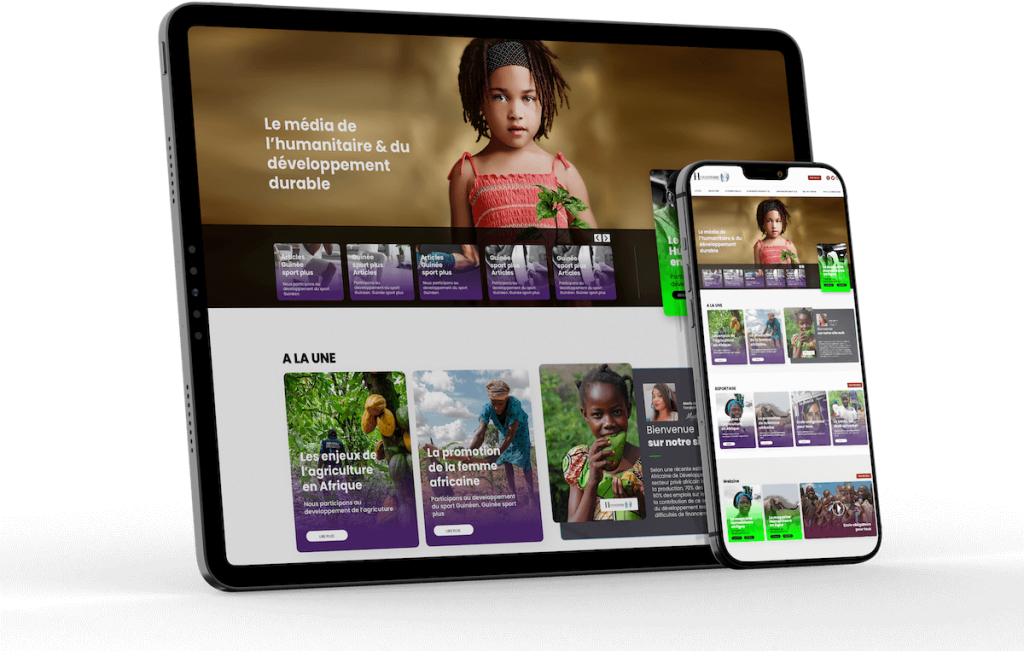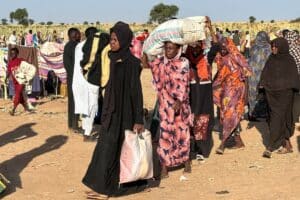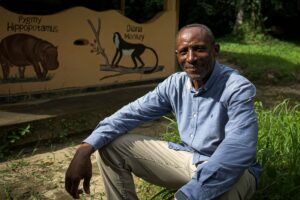Tuesday, October 29, 2024
By Benjamin LEGENDRE
Paris, France
It’s time for finance: after securing an agreement on phasing out fossil fuels, this year’s UN climate negotiations are focusing on releasing the trillions of dollars needed by developing countries to tackle the climate crisis.
The main goal of COP29 in November in Baku, under the presidency of Azerbaijan, is a tough one: how much money will developed countries commit to providing to vulnerable countries to help them cope with an extreme climate?
– What is climate finance?
There is no agreed definition. In the broadest sense, “climate finance” refers to any money spent, public or private, to achieve the Paris Agreement’s objective of “making financial flows compatible with (…) development that is low in greenhouse gas emissions and resilient to climate change” (article 2.1C).
In concrete terms, this includes all financing (public or private) that promotes low-carbon economic development and adaptation: wind, solar, nuclear, clean hydrogen energies…; electric cars; ecological transition in agriculture; reforestation; thermal insulation of housing; securing access to water; sanitation; health systems capable of managing heat waves and floods; dykes to cope with rising waters, etc.
But there are no strict standards for “green” finance, and the line between development aid and climate finance is sometimes blurred. Also, does a subsidy for a new water-efficient hotel, for example, qualify as climate finance? The COPs have never defined this.
– How much do we need?
A study by the Climate Policy Initiative has estimated the world’s “climate finance” needs at $10,000 billion a year between 2030 and 2050. This compares with around 1,300 billion dollars spent in 2021/2022.
But in the UN and media spheres, “climate finance” refers more to the difficulties faced by developing countries in obtaining the international funding they need for a “just transition” to a greener future and to cope with climate-related disasters.
Their needs (excluding China) have been estimated at $2,400 billion a year between now and 2030 by experts commissioned by the UN, according to whom only $550 billion was mobilized in 2019.

– Who pays today?
The United Nations Framework Convention on Climate Change (UNFCCC), adopted in Rio in 1992, listed the countries required to provide financial assistance to the rest of the world by virtue of their historic responsibility.
These countries – the United States, the European Union, Japan, Great Britain, Canada, Switzerland, Turkey, Norway, Iceland, New Zealand and Australia – pledged in 2009 to increase their climate aid to the round figure of 100 billion dollars a year by 2020 and up to 2025.
But they didn’t reach the target until 2022, and this delay has widened the diplomatic gap between North and South.
At COP29, the signatories to the Paris Agreement are expected to agree on a target beyond 2025.
India has proposed $1,000 billion per year. A provocation for the rich countries, who argue that they now account for only 30% of historical greenhouse gas emissions and are calling for the donor base to be broadened to include China and the Gulf States.
Today, most of this aid is channeled through development banks or through funds co-managed with the countries concerned, such as the Green Climate Fund ($12.8 billion received from donor countries for 2024-2027) or the Global Environment Facility ($5 billion for 2022-2026).
– Where to find the money?
Two thirds of the 100 billion in aid is in the form of loans, often at preferential rates but accused of fuelling the debt of poor countries.
Even when revised upwards, the future financial target will still fall far short of needs, but the South attaches great symbolic weight to it and considers that it can act as a lever to unblock other financial flows, particularly private ones.
Financial diplomacy is also very much in play at the World Bank, the IMF and the G20, whose Brazilian presidency wants to create a global tax on the richest.
Promoted by UN chief Antonio Guterres, ideas for innovative taxes – on aviation or shipping, for example – are being studied here and there, for example in a working group launched by France, Kenya and Barbados.
In another proposal, Azerbaijan has called on fossil fuel producers to contribute to a new “concept” fund for developing countries.
As for the “loss and damage” fund created at COP28 to support poor countries hit by climate disasters, it is still far from operational ($661 million in pledges to date).
Humaniterre with AFP





